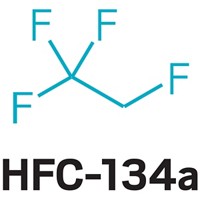Advertisement
Grab your lab coat. Let's get started
Welcome!
Welcome!
Create an account below to get 6 C&EN articles per month, receive newsletters and more - all free.
It seems this is your first time logging in online. Please enter the following information to continue.
As an ACS member you automatically get access to this site. All we need is few more details to create your reading experience.
Not you? Sign in with a different account.
Not you? Sign in with a different account.
ERROR 1
ERROR 1
ERROR 2
ERROR 2
ERROR 2
ERROR 2
ERROR 2
Password and Confirm password must match.
If you have an ACS member number, please enter it here so we can link this account to your membership. (optional)
ERROR 2
ACS values your privacy. By submitting your information, you are gaining access to C&EN and subscribing to our weekly newsletter. We use the information you provide to make your reading experience better, and we will never sell your data to third party members.
Greenhouse Gases
U.S. industries ask Trump administration to endorse global hydrofluorocarbon deal
With EPA regulation overturned in court, companies seek political backing for reducing HFC use domestically
by Cheryl Hogue
June 4, 2018
| A version of this story appeared in
Volume 96, Issue 23

A group of unlikely allies wants the Trump administration to require reduced U.S. use of a class of synthetic chemicals that are potent greenhouse gases, in line with an international agreement.
The organizations lobbying for the restrictions include rival international chemical producers Arkema, Chemours, Honeywell, and Mexichem Fluor as well as a U.S. business that builds refrigerated trailers for shipping. Then there are environmental advocates and domestic manufacturers of home refrigerators.
The organizations hold different views on how the U.S. should implement a 2016 treaty on hydrofluorocarbons (HFCs)—chemicals used as refrigerants, aerosol propellants, and blowing agents that puff up plastic into foams. But they are delivering a unified appeal to the Trump administration, which has generally disparaged international deals, from trade pacts to the Paris Agreement to combat climate change. Their message is simple: Back the global accord on HFCs.
HFCs replaced chlorofluorocarbons (CFCs) and hydrochlorofluorocarbons, two classes of chemicals that were used for the above applications and that break down stratospheric ozone. In contrast, HFCs are harmless to the ozone layer but have large potential to contribute to global warming.
To address the climate change threat from continued use of HFCs, countries met in Kigali, Rwanda, in 2016 and set a global schedule to phase down use of these greenhouse gases. They acted by tacking an amendment onto a 1989 treaty, the Montreal Protocol on Substances That Deplete the Ozone Layer.
Implementing the Kigali Amendment on HFCs hasn’t been high on the Trump administration’s agenda. To do so, the administration must seek formal consent from the Senate to ratify the international treaty. Besides, the U.S. already had a plan in place for ratcheting down use of HFCs—a 2015 regulation from the Environmental Protection Agency under former president Barack Obama.
But HFC manufacturers Mexichem Fluor and Arkema challenged that rule in court. They argued that the agency improperly relied on part of the Clean Air Act that requires manufacturers to replace substances that deplete stratospheric ozone with safer substitutes. Last August, a federal court agreed with them and struck down the rule, delivering a blow to EPA and its supporters in the case, Honeywell International, Chemours, and environmental activists. Honeywell and Chemours make HFC alternatives.
The decision threw the market for HFCs and alternatives into a whirl of uncertainty about whether, when, and how the U.S. will pare back the use of HFCs. At a recent public meeting with EPA, representatives from a variety of industries warned that U.S. businesses might lose money from investments in HFC-free technology because the 2015 regulation is kaput.
For instance, some aerosol product makers have already moved to the use of HFC alternatives. But some of these producers are wondering whether they can switch from newer, more climate-friendly chemicals back to HFCs, said Douglas Raymond, a consultant who spoke at the EPA meeting on behalf of the National Aerosol Association.
Companies can now legally use HFCs in aerosols sold in the U.S., responded Cindy Newberg, who manages EPA’s program that approves the use of chemicals as substitutes for ozone-depleting substances such as CFCs. However, she warned that EPA will eventually restrict HFCs through a new regulation, although the agency is just in the starting phase of creating that rule.
Advertisement
While EPA works on the rule, the Trump administration should reduce uncertainty by endorsing the Kigali Amendment as a political signal that the U.S. still plans to crank back its HFC use despite the court ruling, said Kevin Fay, executive director of the Alliance for Responsible Atmospheric Policy. That group represents manufacturers, businesses, and trade associations that make or use fluorinated gases, including fluorochemical producers AGC Chemicals, Arkema, Chemours, Daikin, Honeywell, Mexichem Fluor, and Solvay. Individual representatives of Arkema and Mexichem Fluor, the companies that successfully argued in court against EPA’s HFC regulation, also said at the meeting that those companies back U.S. participation in the Kigali Amendment even though they questioned the agency’s legal basis for the rule.
Officials throughout the administration, including representatives from the Commerce Department and the military, have held discussions on the Kigali Amendment, said William Wehrum, who leads EPA’s Office of Air & Radiation. They are trying to reach a well-reasoned, deliberative decision on whether to back the global HFC deal, he said.
“You have billions of dollars on the line,” Fay stated. “If you don’t speak up soon, that investment from our companies [in HFC-free technology] is going to go elsewhere.”
President Donald J. Trump has often chosen to change or withdraw from—rather than embrace—international agreements. But failure to support the Kigali Amendment would work at odds with some of his priorities, such as expanding U.S. jobs and cutting the country’s trade deficit, warns a recent study by the Alliance for Responsible Atmospheric Policy and the Air-Conditioning, Heating & Refrigeration Institute. Domestic implementation of the Kigali deal is expected to create 33,000 U.S. jobs in manufacturing by 2027, the study says. At the same time, working with other countries to decrease global HFC use would boost the U.S. share of the world market in heating, ventilation, air-conditioning, and refrigeration equipment to 9.0%, up from 7.2% in 2016, thus increasing the nation’s exports. Not embracing the Kigali deal will mean economic losses for the U.S., the study finds.
Meanwhile, the lack of a federal path to reduce HFCs is leading to a situation that industry detests—regulation of HFCs by individual states, Fay and others said. California is already moving to ban HFCs in certain new equipment, such as frozen-yogurt dispensers, and in foams as a backstop to the overturned EPA rule.
Many sectors fear California’s move will lead to a patchwork of state requirements for HFCs, causing headaches for manufacturers that sell products across the U.S. The federal government, rather than individual states, needs to set policy on HFCs, said Helen Walter-Terrinoni, who works on regulatory strategy for Chemours.
Environmental groups, including the Natural Resources Defense Council and others, have asked the U.S. Supreme Court to review the decision that overturned EPA’s HFC regulation. However, the nation’s highest court receives far more requests for review than it accepts. If the Supreme Court does accept the HFC case, a ruling may not emerge for nearly a year—and even then, the Supreme Court might agree with the lower court’s ruling.
Overall, the situation is “a mess” that may take Congress and EPA several years to rectify, predicted Charles A. Samuels, general counsel of the Association of Home Appliance Manufacturers. The association in 2016 set voluntary goals to stop using HFCs in foam insulation by 2020 and in household refrigerators and freezers after 2024.
The U.S. Senate will have to grant formal agreement to the Kigali Amendment. Both houses of Congress will have to pass legislation giving EPA new authority to implement an HFC phasedown. Then the agency will have to go through a time-consuming procedure to issue a regulation to implement the agreement, a process that usually takes about three years. In the meantime, Samuels said, states have ample opportunity to create a hodgepodge of HFC regulations.
This, Samuels concluded, is “a rather dismal scenario.”
CORRECTION: This story was updated on June 20, 2018, to reflect the position of Fix-a-Flat’s parent company on U.S. support for the Kigali Amendment.





Join the conversation
Contact the reporter
Submit a Letter to the Editor for publication
Engage with us on Twitter